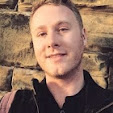Out
of over 90 applications I’ve managed to reach the final 12 artists to a
competition with the People’s History Museum for a week’s residency! I’m pretty
excited but they will only select three based on a public
vote. So please follow that link and vote for me. It’s open in the museum itself
and you can vote online until 5pm 11 June.
The People’s History museum
project would enable me to execute workshops for people to contribute to the
foundations of a bigger project. I am
currently in the process of developing a community quilt project which aims to
celebrate the 396 MPs who voted ‘Yes’ for equal marriage in 2013. 396 portraits
hand drawn will be individually printed on hexagonal fabric and sewn together
to form a quilt.
The remaining 254 MPs that did not say yes will be represented
by hexagonal fabric with messages of hope that have been made by the public.
During the week residency I
will host drop in workshops, getting audiences to create a range of positive
messages to the MPs which did not vote for equal marriage. Participation
aims to inspire more political engagement with current affairs. The project will draw out key examples from the People’s History Museum’s banner collection (which
include banners from suffragettes and section 28 campaigns). The
project highlights that although LGBT people have gained rights, there is still
work to be done to gain real equality. The messages that I create will then be used
to be appliqued onto the hexagons where an MP did not vote for Equal Marriage.
The diagram illustrates how
this would appear, the black hexagons are those that voted against, the grey is
those who abstained and the coloured hexagons represent the MPs who voted yes
(and their political party). You can see
how MPs voted and who they represent from this interactive map from The Guardian which I based this data. I used an image from the Telegraph which is a political map of the 2010 election and modified the colours to reflect the votes made for equal marriage in 2013. From the Guardian article by Simon Rogers you can see the geographical
locations of the MPs and how they voted.
The quilt itself will be
created later in the year and will act as an educational tool to inform young
people of the role of MPs and the how to become an activist for equal rights. I
hope to then tour the piece to raise awareness and hope to other places. I’m
aiming to have the quilt itself ready for the next LGBT history month (February
2015).
So Please help me out simply by voting
for my project here:


.jpg)

No comments:
Post a Comment